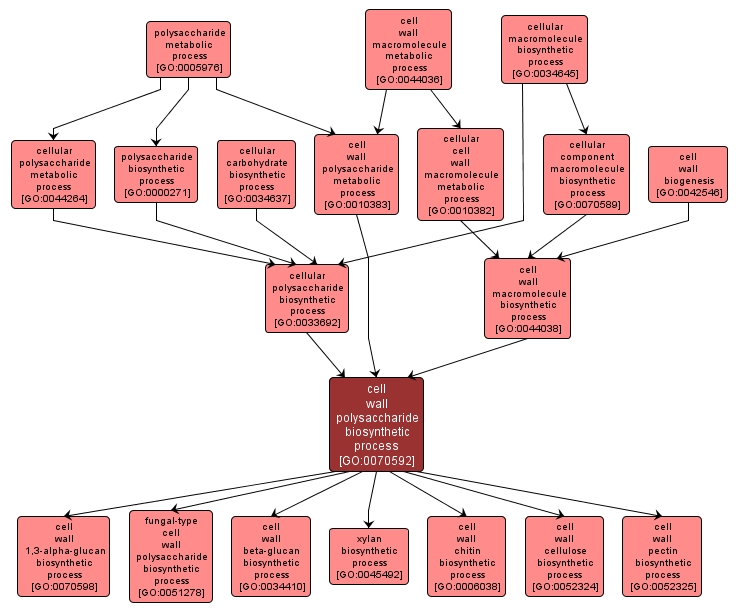GO TERM SUMMARY
|
| Name: |
cell wall polysaccharide biosynthetic process |
| Acc: |
GO:0070592 |
| Aspect: |
Biological Process |
| Desc: |
The chemical reactions and pathways resulting in the formation of a polysaccharide destined to form part of a cell wall. |
Synonyms:
- cell wall polysaccharide anabolism
- cell wall polysaccharide biosynthesis
- cell wall polysaccharide synthesis
|
|

|
INTERACTIVE GO GRAPH
|














